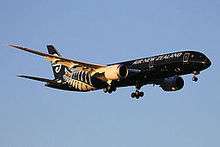Finished goods
Finished goods are goods that have completed the manufacturing process but have not yet been sold or distributed to the end user.[1]
| Look up finished goods in Wiktionary, the free dictionary. |
Manufacturing

Manufacturing has three classes of inventory:
- Raw material
- Work in process
- Finished goods
A good purchased as a "raw material" goes into the manufacture of a product. A good only partially completed during the manufacturing process is called "work in process". When the good is completed as to manufacturing but not yet sold or distributed to the end-user, it is called a "finished good".[2]
This is the last stage for the processing of goods. The goods are ready to be consumed or distributed. There is no processing required in term of the goods after this stage by the seller. Though there maybe instance that seller finished goods become buyer’s raw materials
Finished goods is a relative term. In a Supply chain management flow, the finished goods of a supplier can constitute the raw material of a buyer.
References
- "Finished Goods Inventory". Retrieved 2016-12-20.
- Gill, Suveera (2015). Cost and Management Accounting: Fundamentals and its Applications. Vikas Publishing House. p. 118. ISBN 978-9325990326. Retrieved 2016-12-20.